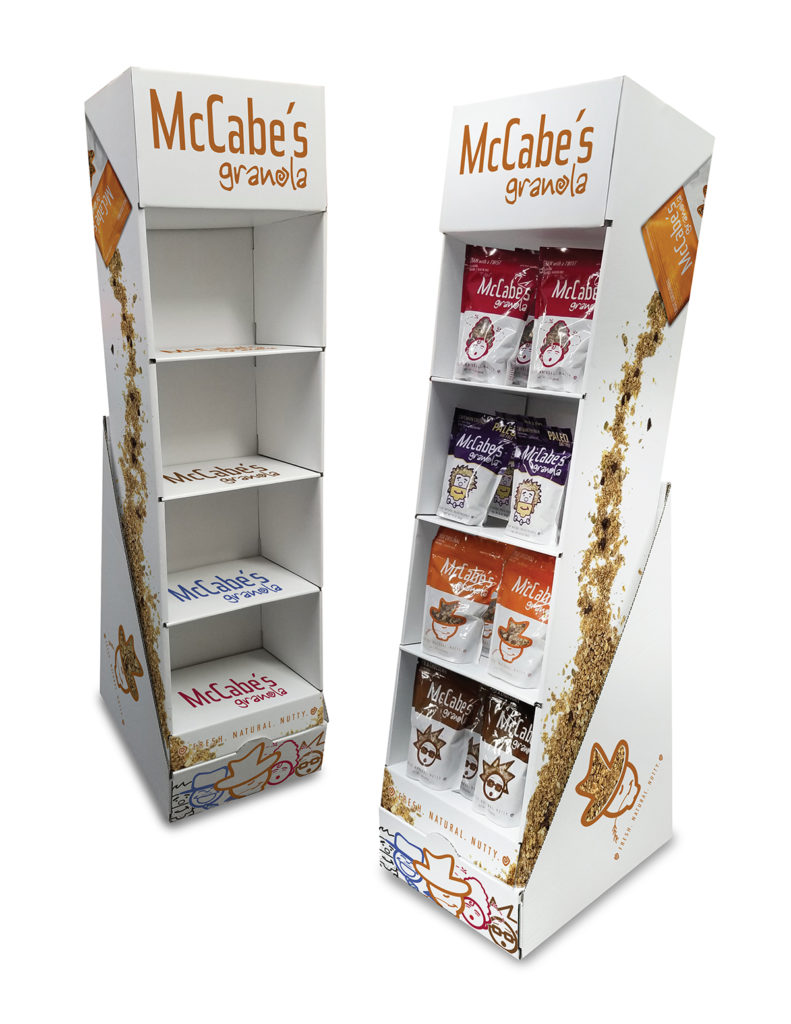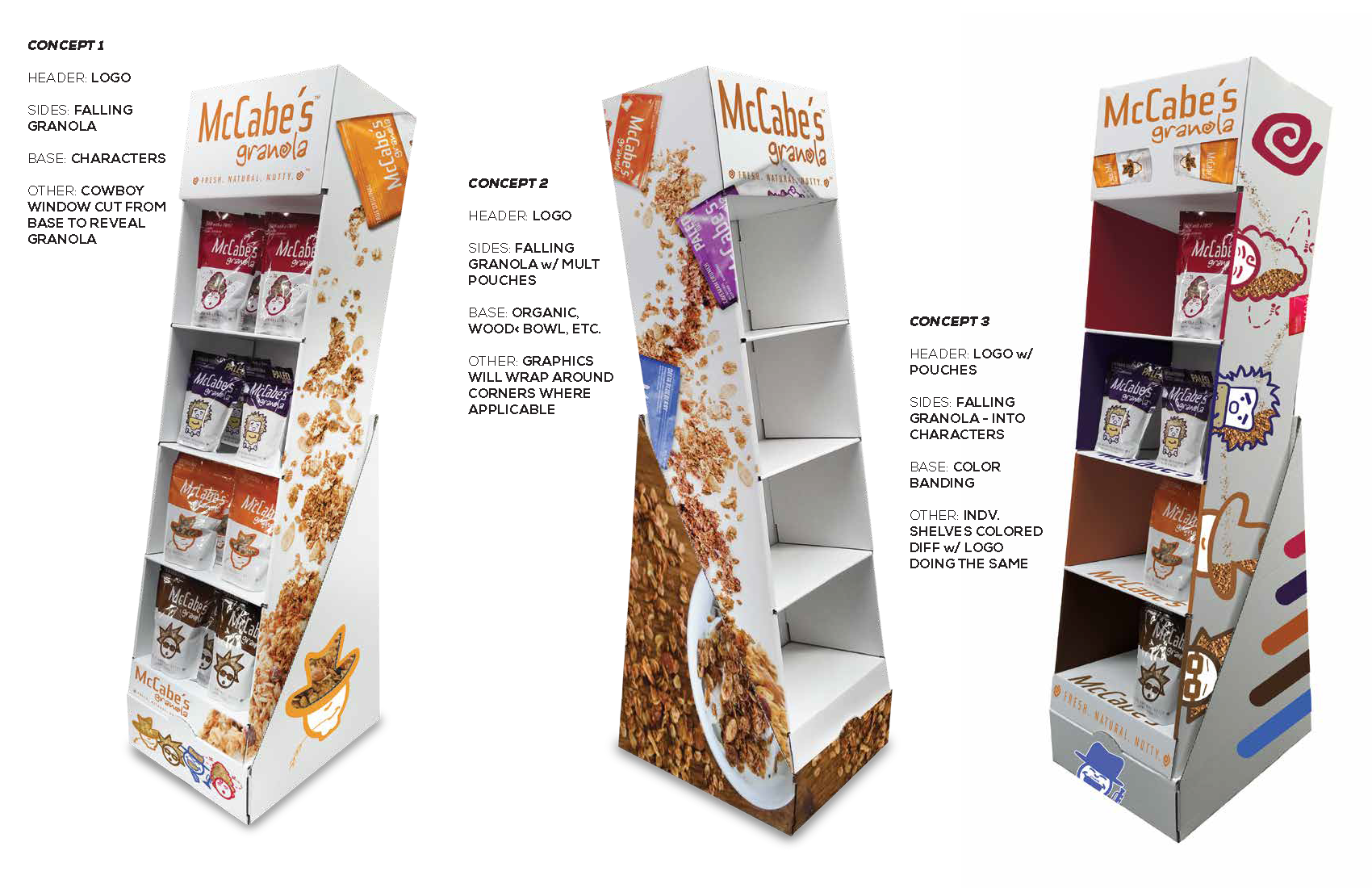[in other words: How to Design your Displays to Move your Products into the Shopping Cart]

The physical store remains the most critical touchpoint to reach and influence consumers to buy products, with 76% to 82% of retail sales taking place in-store (depending on retail segment) according to POPAI (now Shop!). The global spend on in-store POP Marketing Materials is $20 Billion, which results in over $3 Trillion in spend by consumers. A recent Path to Purchase POP Trends Survey revealed that a typical sales lift from a temporary POP display initiative is 24%. That’s not only important information for Brand Marketers, it’s impressive.
Effective POP merchandising displays are more important now than ever for Consumer Brands to cut through the clutter, break the visual barrier, create an impression, and drive sales in these last 7 seconds. We have compiled 11 design strategies that we believe to be the best practices when designing your displays to assure that your product ends up in the consumer’s shopping cart.
But, first, you must ask: “What is your design trying to achieve?”
According to Purchase Point, POP displays types fall into one of 4 categories according to these strategic goals:
- Engage: Surprise and delight shoppers with a new, intriguing experience
- Inform: Tell shoppers about a new product or service
- Achieve: Interact with consumers in a way that can’t be done online
- Persuade: Convey a strong case why they need your product or give them an offer they can’t refuse
While each of these 4 agendas may have their own set of design strategies, here’s a compilation of 11 design best practices for an effective in-store display strategy.
11 POP Merchandise Display Design Strategies
- Bold color. Be selective in color choice so that you communicate the proper vibe. For example, warm colors trigger impulse and cool colors trigger a healthy feeling.
- Stopping power. Use unique display shapes and sizes to stand out on shelf and in the aisles. Curves are proven to generate more sales lift, especially in the beauty category.
- Have a clear message hierarchy. Keep messages simple with just a few solid points (5 to 7 words) that best describe the reason they need this product. Today’s shoppers are typically armed with more pre-purchase information before they hit the store aisles, making it unnecessary to include every product feature.
- Tell your brand story. Create emotion that makes your brand the hero, make shoppers crave the item. Be sure your logo is well placed.
- People relate to people. Make people or character’s faces the center of the display.
- Create shop-able displays with easy access to the product and make it easy to re-stock merchandise.
- Interactive, experiential displays must be intuitive. If sound, scent or motion technology is used to get shopper’s attention they must know exactly what they are supposed to do. Do this with direct messages like “Smell this” “Press Button to Play” and/or include arrows that point to the action desired.
- Simulate what it would be like to use or consume the product, illustrate the results or benefits and make it aspirational. “Show me, don’t tell me”.
- Endcap displays are proven to have the most sales lift by display type. Use them to cross sell and preview what shoppers will find down the aisle.
- Be creative inside the box. Design appropriate display footprints for the promotion scope and allotted store space to ensure the best possible display compliance. Also consider how the display will knock down to ship in the smallest box possible to keep costs down.
- A one-size fits all design strategy is not effective. Know your target consumer and customize your POP to be relevant to them. The same display may not resonate with shoppers in one demographic location vs. another.
Great Design Aside- These Other Display Details Matter Too
A well designed merchandise display can be underutilized and far from effective when some of these details that are crucial to their success are overlooked:
- Placement in the store- You could have the greatest In-Store Marketing Campaign in your brand’s history, but if no one ever sees it how would you know? For example, shoppers rarely ever look up once they are in the store aisle, so the focal point should remain in the Strike Zone (shoulder to knees).
- Keeping displays well stocked- Even the best looking displays fall short when they are not well stocked.
- Items priced and signed correctly- Shoppers pay attention to price, and if prices are missing or items are not clearly marked, the shopper is most likely to move on to choose another brand.
- Compliance- Is the display put together, executed, and displayed as planned? Generate a Plan-o-gram to show how the display is to be assembled and merchandised for maximum compliance. Deciding who will best conduct the installation and measuring compliance is important in order to achieve the greatest ROI.
We hope you find these design strategy best practices helpful (at minimum, good reminders) when executing your next in-store POP Program.

